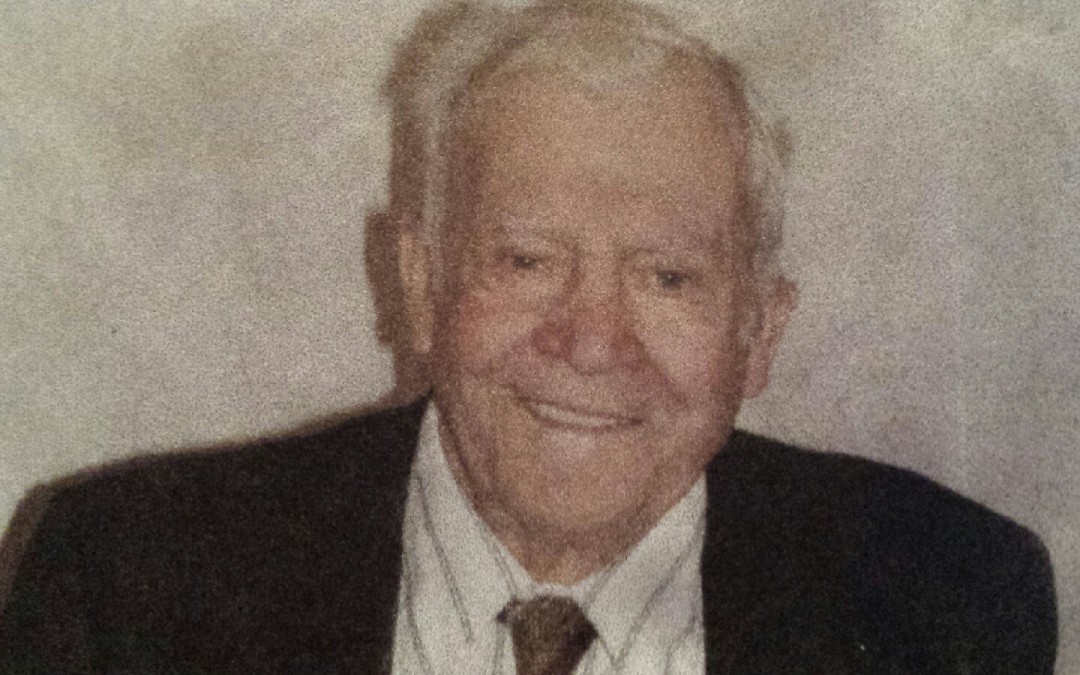By Alice Drake, Trustee
Hanging winter decorations at the church last month I thought how lucky this historic church is to have survived. I considered the many people who worshipped, visited and protected this place over the nearly 150 Christmas seasons that have passed since its dedication in May of 1866. One of those people was Gilsie (Gilsey) Techam (1907-1990), a retired farmer, and great grandson of one of the early church members.
Gilse’s family was one of many who came to the west Middleton area from Mecklenburg, Germany. His great grandfather Friedrich (Fritz) Techam (1814-1881), was a weaver and farmer. On 16 April 1855, along with his wife Elisabeth Fehland (1823-1855) and five children, the family boarded the vessel “Oder” and sailed from Hamburg. They arrived in New York after a harrowing voyage of nine weeks, during which they narrowly escaped shipwreck, and made their way to west Middleton where Fritz bought two hundred and forty acres of “wild” land a portion of which would be owned by the Techam family for the next 138 years.
They had barely arrived in Middleton when Elisabeth Fehland died on 17 June 1855 leaving Fritz in a new country, widowed and the father of five young children. He set to work clearing his land, planting and building a home for his children. Then, in December 1855, the youngest son, Joachim, just seven months old when the family left Hamburg, followed his mother to the grave. Johann Frederick Techam (1845-1926), who would become grandfather to Gilsie, was just nine years old when the family arrived in America. Nine year old Johann was now a motherless child laboring beside his father to improve their land and care for his siblings.
Johann would survive life in America. In 1872 he would marry Liesetta Wittenburg (1850-1895) and father eleven children including Frederick (Fred) (1880-1962). A son and daughter died shortly after birth in 1890 and 1892. Then, in 1895 Liesetta would die along with her twin sons, Jessie and Juneau. Now, fifteen year old Fred, who would become father to Gilsie, was without a mother and would work the farm with his father and help care for the family.
In 1905, still working the farm, Fred married Caroline (Lena) Schulenburg (1881-1928) and in 1907 Gilsie was born. He had two sisters, Bernice (1905-1983) and Luella (1910 -1987). Gilsie made the long walk from the farm to attend school in Middleton where he played basketball, bowled, and completed the 12th grade.
At home on the farm eighty-nine of the original two hundred and forty acres remained in the family name. The property was located on “Shellhorn Hill” just to the east of Esser Pond where the Marriott Hotel in Middleton now stands. Gilsie raised sheep, pigs and chickens and milked thirty two cows. Hay was stored loose in the barn. Until 1939 when he bought his first tractor grain was harvested with horses and a threshing machine.

Green pins show the Techam farm. Red pins show the old log church and current First Lutheran Church and Cemetery
Gilsie never married. In 1972 he retired but rented the farmland to area farmers who worked the property. His sisters died in 1983 and 1987 and shortly after their deaths Gilsie, now 80 years old was approached by developers and sold his property. The Holiday Inn was built shortly after and today the Madison Marriott West Hotel stands on the site of the original homestead.
Gilsie’s generosity to the Middleton community and other charities was great. He left most of the remaining $700,000 of his estate to charities and organizations. His gift of $20,000 to the historic First Lutheran Church was instrumental in the first renovation in 1989. He also gifted the Middleton Historical Society with the purchase of the Rowley House that serves as the museum, the Evangelical Lutheran Church of America’s World Hunger Appeal, St. Luke’s Church in Middleton, the Middleton-Cross Plains School District, Boy Scout Troops, the American Lung Association of Wisconsin, the American Red Cross, HospiceCare, the Middleton Library board, the Middleton Fire District and Middleton Area Emergency Services, close family and friends.
Gilsie’s ancestors are buried in both the “old” cemetery where the log church was built and in the cemetery of the historic white church. I think of their struggles and am grateful that the church stands witness to their joys and sorrows, to lives filled with love, labor and losses and the hopes and dreams that life for their children would be better than their own.
This is the season for giving; more importantly it is the season to give thanks for what has been received. To each of you who have given time, labor and money to keep history alive, the board sends sincere thanks and best wishes for the New Year.
God Bless You, Every One!

